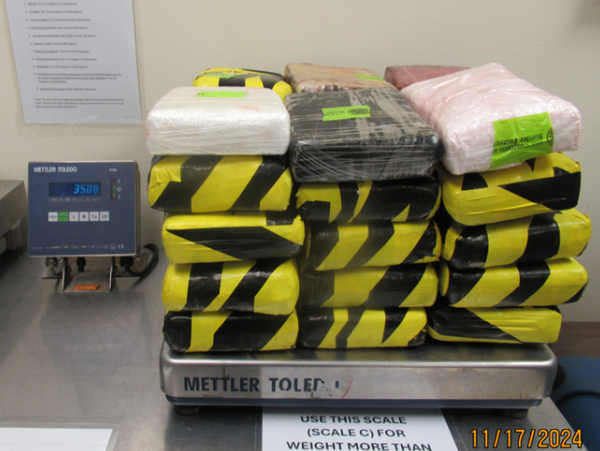
Closing perfectly good nuclear power plants decades ahead of schedule is a bad idea if you care about the environment, especially if you care about carbon emissions. That’s because nuclear is the best source of low-carbon energy and actually produces most of our low-carbon electricity, over 800 billion kWhs – twice as much as all renewables combined. And twice as much as hydro.
More importantly, the U.S. nuclear fleet avoided 547 million metric tons of CO2 in 2017, similar to most years. At the same time, hydro only avoided 203 million metric tons, wind 176 million metric tons, solar 37 million metric tons, and everything else less then 15 million.
Since the U.S. emits about 1,900 million metric tons of CO2 from fossil fuels that generate electricity, nuclear is the most effective tool we have to decrease or avoid emissions.
This might not matter to many people, but it supposedly does to the very people who are trying very hard to close nuclear plants, people who claim they are environmentalists and appear dismayed recently by the Fourth National Climate Assessment. That Assessment reiterates that the effects of global warming are here already, that they pose a profound threat to Americans’ well-being, and that U.S. emissions are rising again.
So closing nuclear plants seems foolish.
Unfortunately, between political pressure and minor cost differences in unregulated electricity markets, nuclear plants are being closed, plants that have received another 20-year life extension from the NRC (see figure below). Except for two – Crystal River truly had physical problems and one of SONGS’ two reactors should have just run at 70% power, the other was unaffected by any technical problems.

The politics are understandable, if misguided. But the costs are strange. Renewables are more costly than both gas and nuclear, but their 2.5 cent/kWh tax credit, plus state mandates and federal construction subsidies, seem warranted given the fears of climate change.
Nuclear plants are only about a cent/kWh higher than gas so a subsidy, much smaller than that for renewables, is certainly warranted, and has been borne out by reality.
The nuclear plants that have already closed in recent years include Crystal River, SONGS, Kewaunee, Vermont Yankee, Fort Calhoun and Oyster Creek. These were replaced mainly by natural gas and imports to those states, adding about 25 million tons of CO2 annually.
U.S. carbon emissions rose in 2018 by over 60 million tons of CO2. Closing those nuclear plants, building new gas plants, increasing manufacturing and construction, and increasing gasoline/diesel/jet fuel demand are the reasons for this rise. Increased renewables have not been able to keep up with any one of these effects.
But what we are facing is bigger than this. The additional 12 units that have been announced for closure presently avoid 55.5 million metric tons. This is why the state policies to recognize the value of nuclear plants matter – they can make a difference. The policies enacted in New York, Illinois, Connecticut and New Jersey are already saving 60 million metric tons per year (see figure below).

A case in point comes from Pacific Gas & Electric Company. In a plan made jointly with anti-nuclear groups instead of climate scientists, PG&E announced its decision to close its two well-running, low-carbon, low-cost nuclear reactors at Diablo Canyon.
PG&E claims that the nuclear energy lost will be replaced completely with renewables and gains in efficiency. But the proposal’s details do not back this up. In fact, it calls for implementing renewables and efficiency equal to only about a quarter of Diablo Canyon’s generation. Instead, experts agree, the generation will mainly be replaced by natural gas, and attempts to buy energy from out-of-state.
Fortunately, the costs will go onto the shoulders of taxpayers, not ratepayers, so Californians won’t necessarily notice the increased costs. Unfortunately, this closure will wipe out more than all of the state’s gains in wind energy, along with the tens of billions of dollars spent on them.
That’s because all wind energy in California only produces 13 billion kWhs a year, much less than Diablo Canyon’s 18 billion kWhs per year. The two Diablo Canyon nuclear reactors would produce 18 billion kWhs every year for at least the next 25 years if not prematurely closed. Since wind turbines have to be replaced about every 20 years, this means that just to stay even, California would have to install over twice as many wind turbines as exist today, with no net reduction in emissions.
The only way to lower emissions sufficiently by mid-century is with a mix of technologies including nuclear and renewables. And replacing internal combustion engines with mostly electric vehicles charged with non-fossil fuel-generated electricity like nuclear and renewables.
Nuclear power is already a mature technology and the latest generation designs are even better – they just cannot melt-down. And we know what to do with the waste.
The Organization for Economic Co-operation and Development projects that, in order to meet any desired emissions goals, the share of nuclear energy in global electricity production needs to rise from about 400 GW to over 1,000 GW by 2050, producing about 9 trillion kWhs/year, at a construction cost of about $8 trillion.
This also assumes wind and solar reach about 2,000 GW each over the same time period, producing a combined 10 trillion kWhs/year at a construction cost of about $20 trillion.
The world’s top climate scientists, including Dr. James Hansen, Dr. Tom Wigley, Dr. Ken Caldeira and Dr. Kerry Emanuel, have all urged world leaders and environmental campaigners to stop their unscientific and ideological attacks on nuclear energy and support its expansion.
They have also warned that the anti-nuclear position of environmental leaders is causing unnecessary and severe harm to the environment and to our planet’s future by prolonging carbon emissions. Last year’s rise in emissions is just one consequence.
Even the Union of Concerned Scientists says we need nuclear to address global warming.
So why won’t supposed environmentalist not listen to actual climate scientists?







